Port St. Lucie, FL Pollen and Allergy Report for Summer 2023
Pollen Allergy Trends in Port St. Lucie, FL
When is pollen lowest in Port St. Lucie, FL?

May
Lowest month total PPM
Avg. PPM
When is pollen highest in Port St. Lucie, FL?

April
Highest month total PPM
Avg. PPM
How does pollen in Port St. Lucie, FL compare to Florida?
Port St. Lucie has a lower average PPM than the state of Florida.
Port St. Lucie yearly avg PPM:
Florida yearly avg PPM:
How does pollen in Port St. Lucie, FL compare to the USA?
Port St. Lucie has a higher average PPM than the USA.
Port St. Lucie yearly avg PPM:
USA yearly avg PPM:
Is pollen worse this year in Port St. Lucie, FL?
Spring 2023 was better than spring 2022.
Spring 2023 PPM:
Spring 2022 PPM:
Average PPM in Port St. Lucie, FL
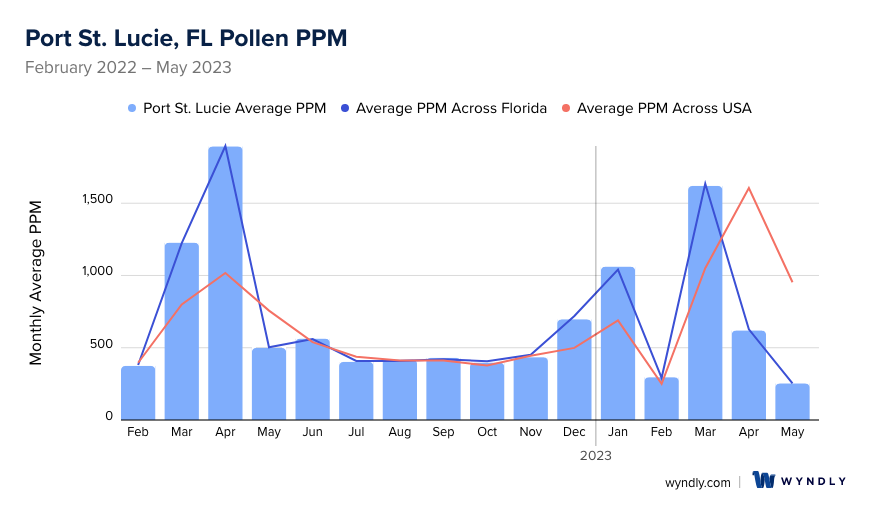
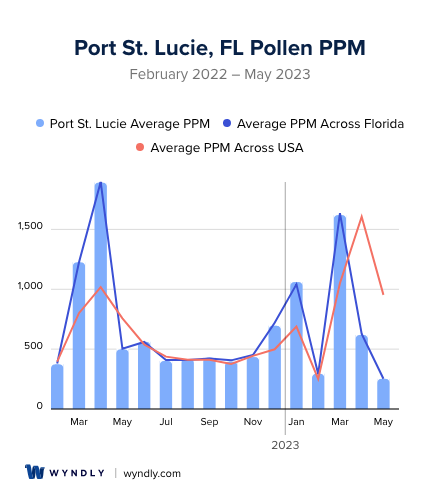
Port St. Lucie, FL Pollen and Allergy Breakdown by Month
Grass
When is grass pollen highest in Port St. Lucie, FL?
April has the highest grass pollen in Port St. Lucie, FL with an average PPM of
When is grass pollen lowest in Port St. Lucie, FL?
December has the lowest grass pollen in Port St. Lucie, FL with an average PPM of
Tree
When is tree pollen highest in Port St. Lucie, FL?
March has the highest tree pollen in Port St. Lucie, FL with an average PPM of
When is tree pollen lowest in Port St. Lucie, FL?
July has the lowest tree pollen in Port St. Lucie, FL with an average PPM of
Weed
When is weed pollen highest in Port St. Lucie, FL?
June has the highest weed pollen in Port St. Lucie, FL with an average PPM of
When is weed pollen lowest in Port St. Lucie, FL?
February has the lowest weed pollen in Port St. Lucie, FL with an average PPM of
Port St. Lucie, FL Pollen Monthly Breakdown by Pollen Type
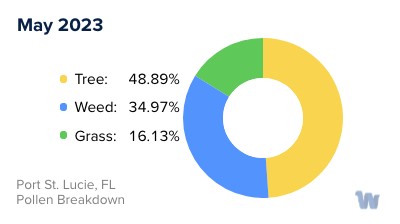
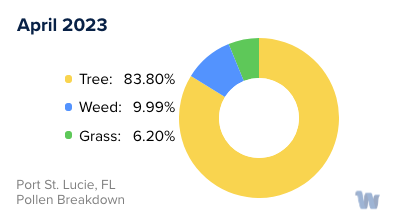
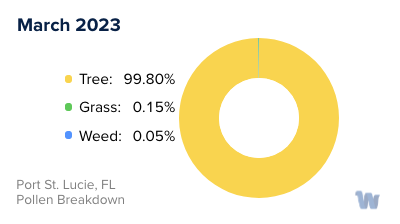
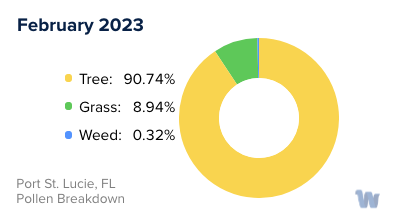
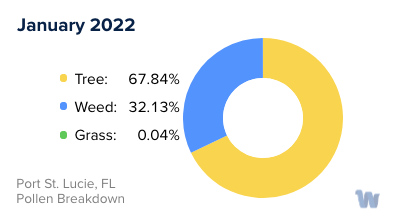
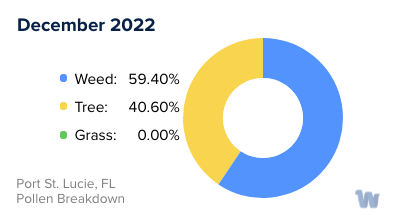
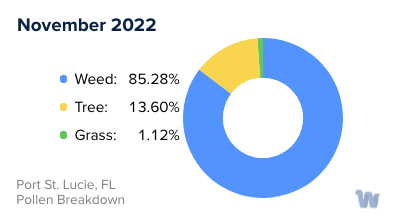
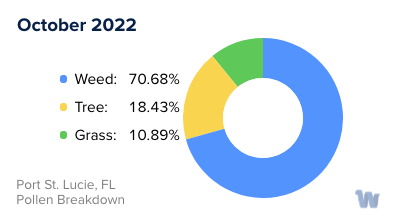
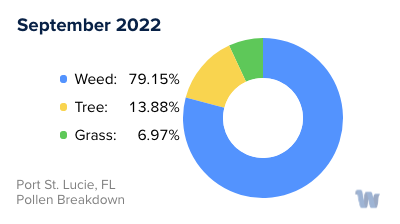
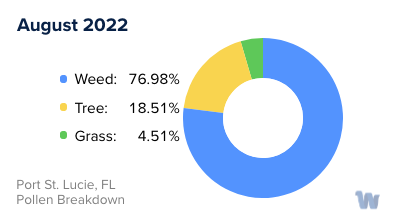
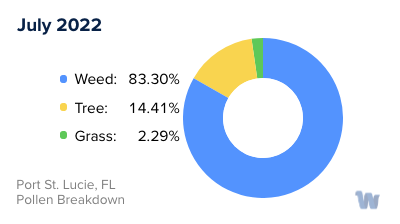

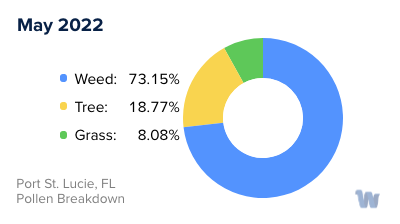
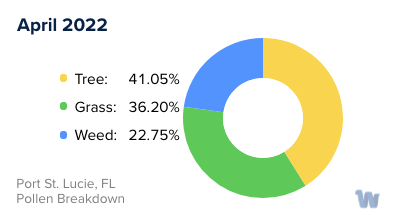

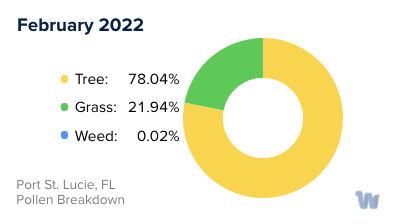
Pollen and Hay Fever in Port St. Lucie, FL
Pollen allergies, often referred to as hay fever, can be a significant concern for residents and visitors in Port St. Lucie, Florida. The primary contributors to these allergies are grasses, trees, and weeds, with each presenting their pollen at different times of the year.
Florida's mild climate creates a unique situation where allergy seasons extend throughout most of the year. Pollen allergies mainly flare up in the spring, summer, and fall, with specific months such as April, May, and September typically seeing peak pollen counts. Contrary to what one might expect, the winter season does not offer respite from allergies in Florida. The mild winter means certain plants, notably species of pine and oak, continue to grow and spread their pollen, triggering seasonal allergy symptoms.
A diverse array of flora contributes to the pollen count in Florida. Some of the most common allergens include ragweed, sorrel, oak, pine, river birch, bayberry, elm, and maple. Each of these plants has its own unique pollen season, contributing to the extended allergy season in Florida.
For those residing in or visiting Port St. Lucie, it's essential to be aware of the types of pollen that might aggravate allergy symptoms and the seasons in which they are prevalent. This awareness can help individuals plan their activities accordingly to minimize exposure during peak pollen times. Remember that pollen counts can vary from day to day, and conditions such as wind and rain can significantly impact the amount of pollen in the air on any given day.
In summary, Port St. Lucie's pollen seasons are extensive due to Florida's mild climate and diverse vegetation. While this city offers a beautiful natural environment, its flora can pose challenges for individuals with pollen allergies throughout much of the year.

